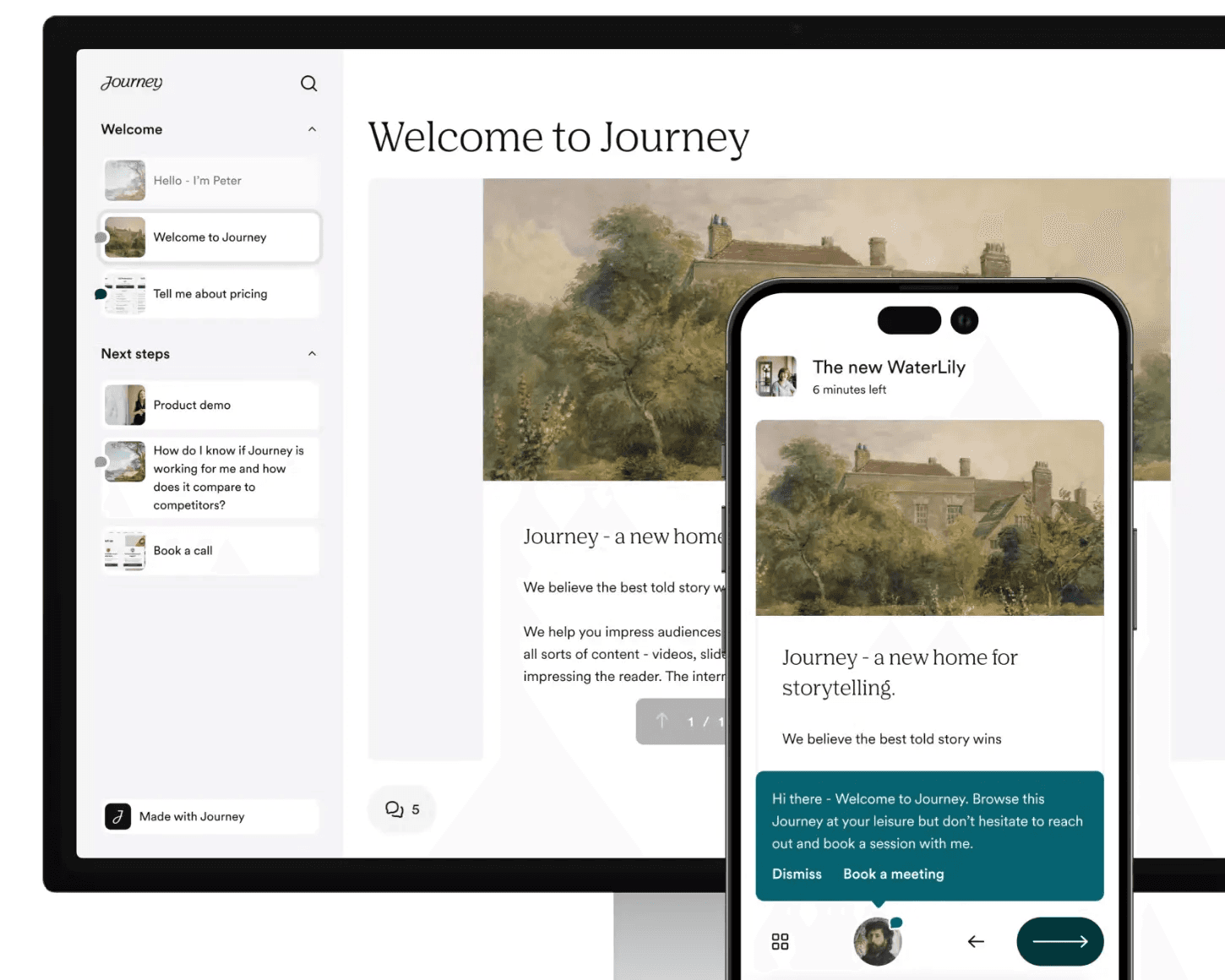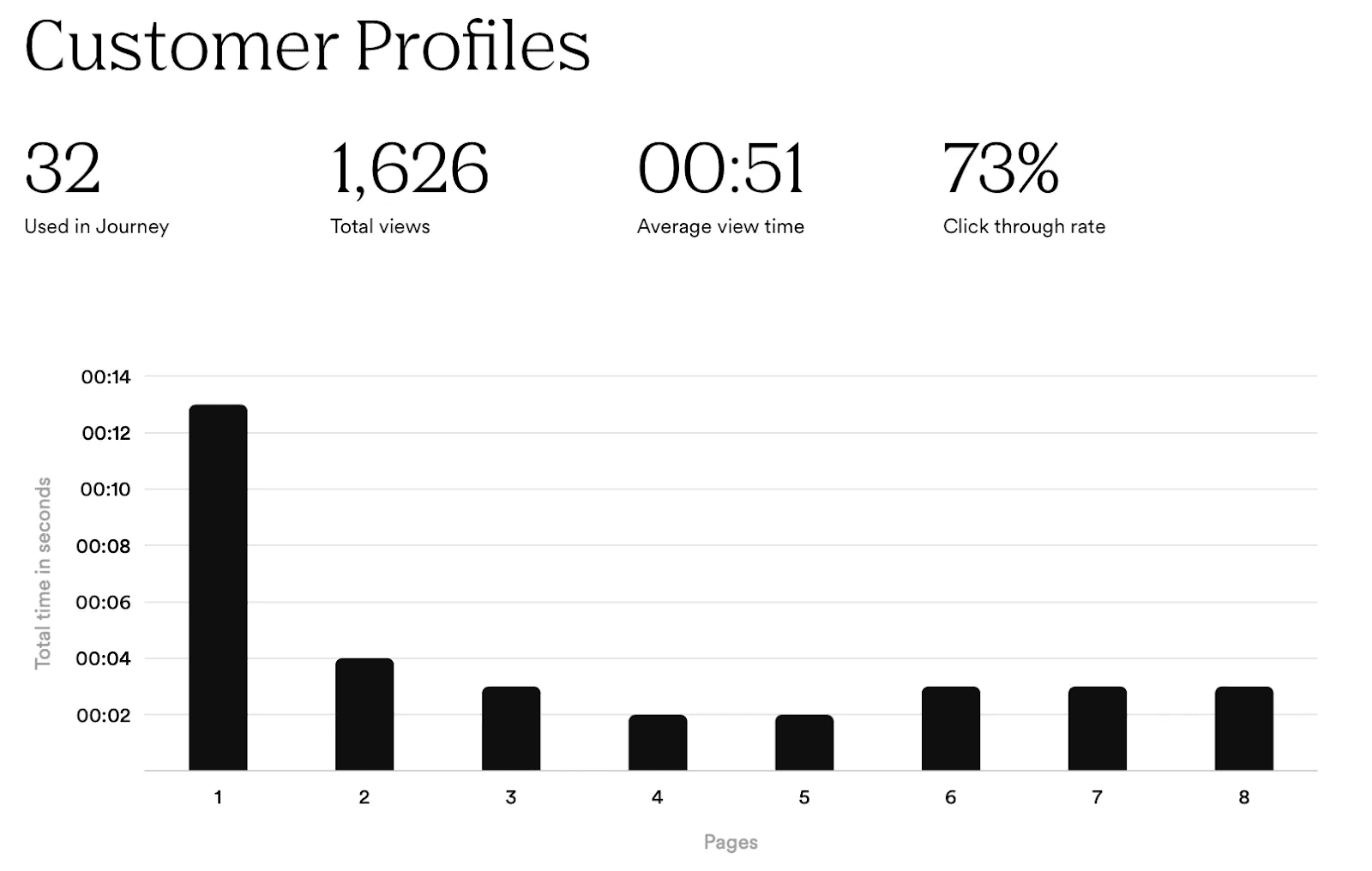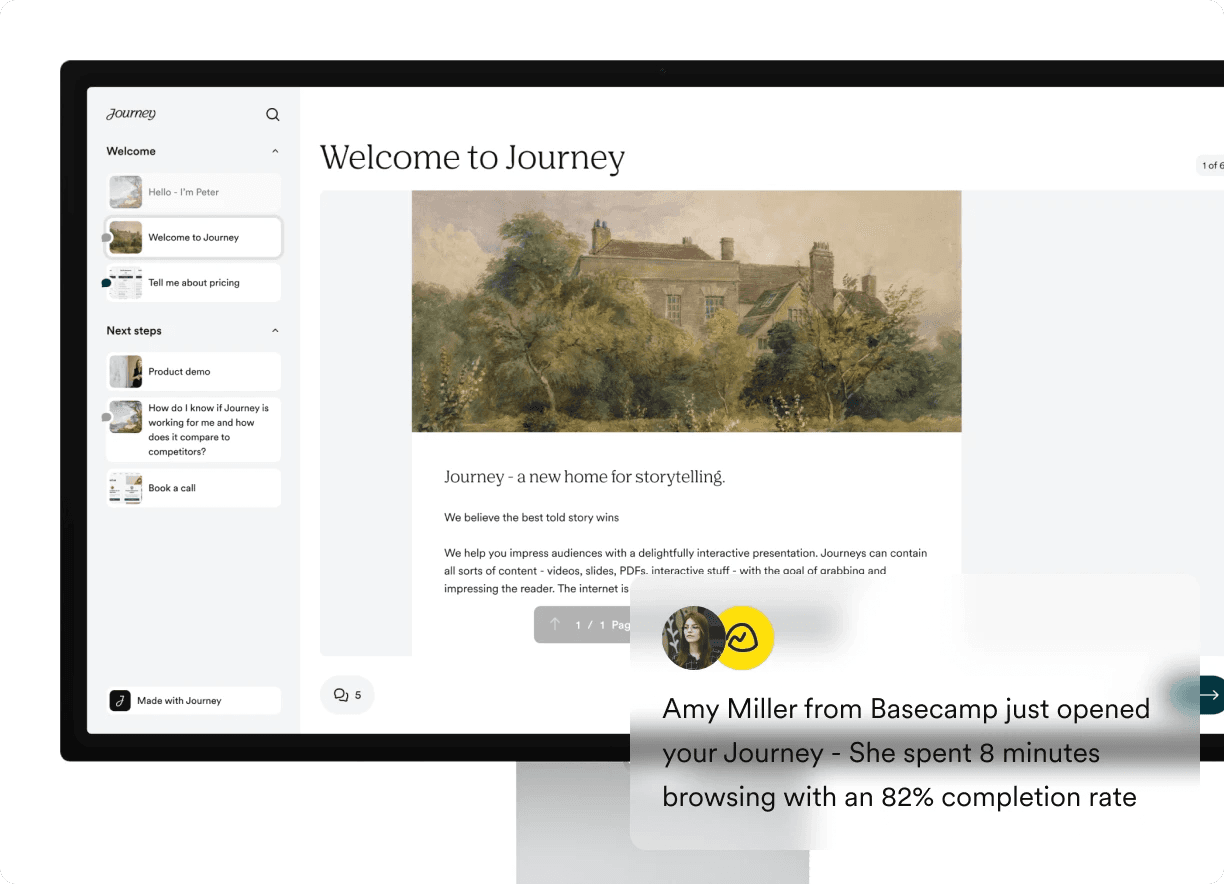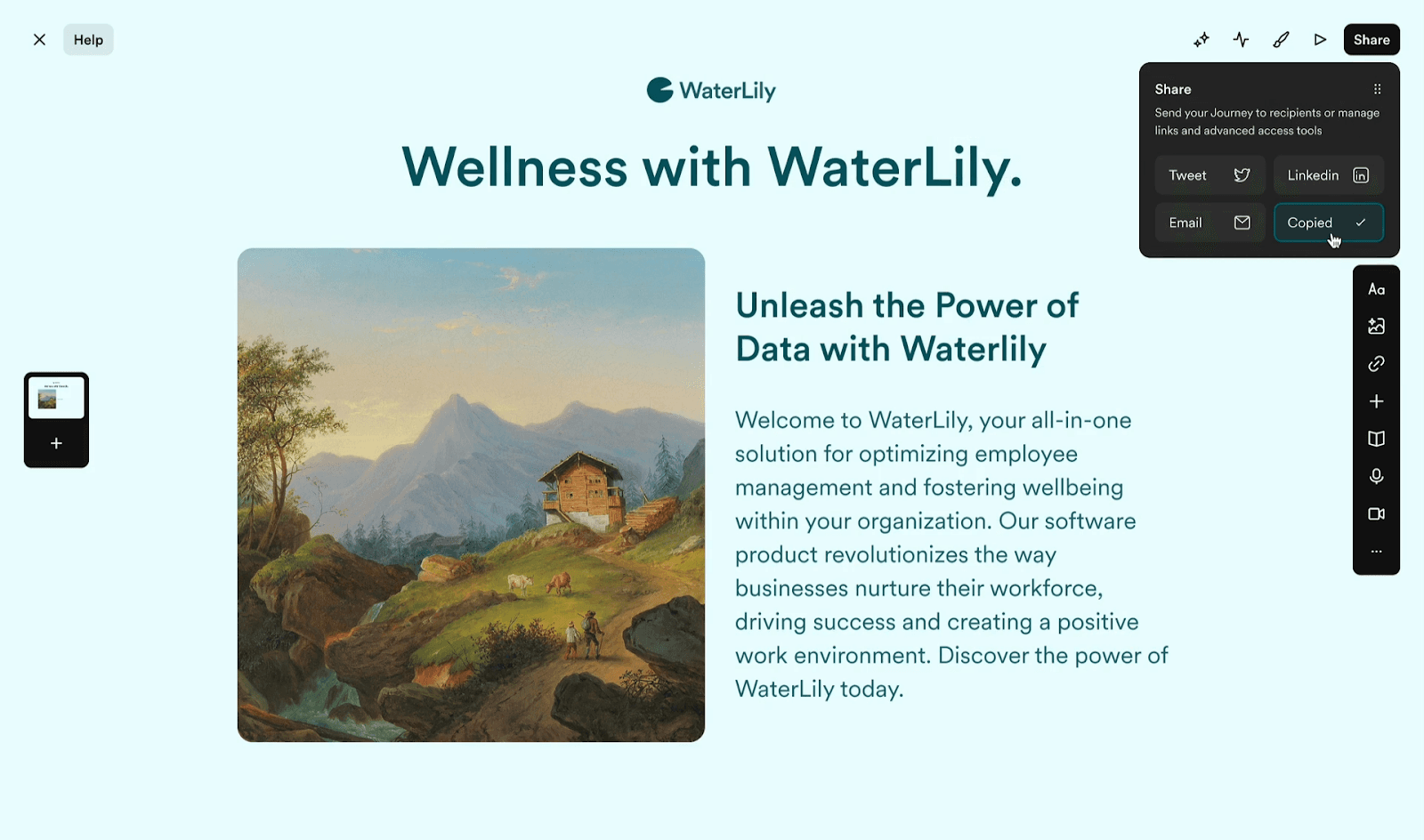February 14, 2024

"You can't play in the man's game, you can't close them. Because only one thing counts in this life: Get them to sign on the line which is dotted."
In "Glengarry Glen Ross," the character played by Alec Baldwin delivers this iconic line to Jack Lemmon’s character.
While Blake might be swaggering about, behaving like a clown, shouting at downtrodden salesmen in a shabby company that's attempting to sell subpar real estate, he’s got a point.
Getting accounts to sign on the dotted line may not be the thing that counts in this life, but it sure is the only thing that counts in sales.
A few curse words later...he says...
"You've got the prospects coming in. You think they came in here to get out of the rain? A guy don't walk on the lot lest he wants to buy. They're sitting out there waiting to give you their money. Are you gonna take it?"
Yes, you've got prospects coming in. Now, it's your responsibility not just to sell to them, but to nurture them and build relationships that transform them into high-value accounts. Ones that will choose to do business with you for life – or, at least, for years to come.
And this, dear reader, is the essence of Account-Based Selling (ABS).
What Is Account-Based Selling?
Account-Based Selling (ABS) is an approach to sales and marketing that zeroes in on building relationships with specific high-value accounts. Emphasis on high-value.
Rather than casting a wide net for leads, ABS focuses on a handpicked group of ideal customers and tailors sales and marketing efforts to meet stakeholders where they currently stand. This results in 73% of professionals using ABS saying that they’ve seen an increase in average deal size and, in cases like Payscale’s, 6x increases in revenue.
It begins by identifying target accounts that fit the company's ideal customer profile (ICP) – which is also referred to as ideal client profile, target customer persona, customer avatar, buyer persona, and more.

Character icons not necessary (but sometimes helpful). Source: Echobot
Within these target accounts, key decision-makers may include:
C-suite executives (CEO, CFO, COO)
Directors and Vice Presidents across various departments (Sales, Marketing, Operations, etc.)
Managers or Team Leaders with purchasing power
Influencers or other stakeholders involved in the decision-making process
The heart of ABS is about nurturing these target accounts, guiding them towards a sale by offering personalized messaging and solutions that speak directly to their pain points and aspirations.
Unlike traditional sales and marketing tactics where departments often work separately, ABS champions collaboration between sales and marketing teams, ensuring a cohesive experience for target accounts from the first time they see your business (e.g., an ad) to when the sales process starts.
This strategy goes by several names like Account-Based Marketing (ABM), Account-Based Sales (ABS), and Account-Based Sales Development (ABSD). This confirms that it isn't a new fad. It's been a key player in B2B sales for some time.
Here’s how it works!
What Are the Processes and the Practices in Account-Based Selling?
Finding the Right Accounts
Account-based selling requires more effort, so you’re not going to want to go for garden-variety accounts. Instead, focus on your white whales: the accounts that have the potential to make a significant dent in your revenue.
At the same time, ABS takes a while to see results, so factor that in. It’s a long play – not something to squeeze in at the end of the quarter when you’re in a quota pinch.
From there, identify the accounts’ key decision-makers.
Work with marketing to plunge into market trends, as well as the accounts’ past interactions, and firmographic data (among other data) to get the whole picture of what they need, who they are, and what’s currently stopping them from buying from you.
A Few Words About Multiple Stakeholders
I get it: "multiple" and "stakeholder" in the same sentence can be anxiety-inducing for any salesperson in B2B. It’s like a bustling kitchen with too many chefs where everyone is bumping into each other, blocking the way, and trying to grab the same things all at once.
(Have you ever watched The Bear? Something like that.)

You and me dealing with multiple stakeholders.
A handful of stakeholders will most often throw a wrench in the B2B sales process. That's why ABS allows you to address each stakeholder’s top priority.
Suppose you’re offering project management software. You need to find all the people who are involved in the purchasing process. For example:
Project Managers: They will be the primary users of your software and will have insight into their team's needs and pain points. In the ABS approach, you could offer personalized demos showing how the software simplifies task management.
IT Managers: They will be concerned with the technical aspects of implementing and integrating your software into their existing systems. In the ABS approach, you’d highlight the software's compatibility with the existing IT stack and its scalability.
Executives: They will have the final say in approving the purchase and will be interested in how your software can drive business outcomes. You could share reports and case studies, or present a business case showing how the software leads to faster time-to-market.
Finance Managers: They will be concerned with the cost-benefit analysis and ROI of implementing your software. To convince them, your ABS approach could be to offer a clear pricing model with clear breakdowns of costs and potential savings compared to alternative solutions.
Defining Your Ideal Customer
To kickstart your journey towards targeting the right accounts, start by defining your ideal customer.
Beyond company size, industry, and location, consider factors like revenue potential, growth trajectory, and even how tech-savvy they are. Understand the unique challenges and pain points they face and how your product or service can save the day.
Next up: research. Once you have your ICP locked in, dig deep into their organizational structure, strategic goals, and any recent happenings that might be useful to your sales process.
As for decision-makers, who's got a say in the company? Get to know…
What are their roles?
What are their headaches?
What are their dreams? What do they want to achieve by working with you?
How do they prefer to communicate?
And don't forget the personal factors! Understanding their backgrounds, interests, and networks can help you tailor your approach for maximum impact.
And speaking of "personal"...
Craft Personalized Messages
This involves diving deep into the decision-making process within each organization and crafting a bespoke sales strategy for each one. Build your approach to fit like a glove, so you're speaking directly to the specific needs and pain points of each target account.
Focus on…
Customized proposals
Case studies showcasing relevant success stories
Industry-specific whitepapers packed with valuable insights
Interactive demos to bring the solution to life (this is a huge one)
Your goal is to deliver the right content to the right people at the right time, so each touchpoint hits home and moves the needle closer to a successful close.
Align Your Teams
ABS thrives on teamwork and alignment across different departments within the organization.
Sales and marketing are the frontrunners, as I've mentioned, but customer support and product development teams can all pitch in to create a personalized approach. As long as they can work seamlessly together.
For example, let’s say your software company is eyeing the healthcare industry. Here’s the mini-RACI:
Sales team - Identifies key accounts in healthcare and engages with them.
Marketing team - Builds content and campaigns that sync up with the sales game plan. For example, they create industry-specific case studies or whitepapers that tackle the unique challenges faced by healthcare organizations. They launch advertising to make sure you’re reaching the right stakeholders and priming them for profitable convos.
Customer support - Provides insights on similar customers for real-life experiences with your product and stands ready to assist healthcare clients post-sale.
When marketing, sales, and other departments are in sync like this, every interaction, whether it's a sales call or a marketing email, feels like part of a well-oiled machine.
How to Track Your Account-Based Selling Success
Match your business goals to what makes your target accounts tick.
Metrics like customer lifetime value (CLV) and churn rate give you the lowdown on the long-term health of your accounts and how well your sales efforts are paying off.
There are also metrics like account engagement, average deal size, conversion rates, and pipeline velocity, which give you a more granular picture of how your ABS is performing as you first launch it.
Constantly analyze and tweak your approach based on what the numbers tell you.
For example, you might notice you’re seeing significantly bigger deals with customers who use your product to grow their SQLs.
Knowing this, you can prioritize companies that focus on lead generation as their primary goal. In your ABS communication, you can emphasize features like advanced lead-scoring capabilities as the key value drivers for this segment.
One Word to Master the Buyer Committee Conundrum: Journey
Journey gives you a unified Digital Sales Room (DSR) where you can engage all stakeholders at the same time, with the materials they care about.

Combine slides, Looms, spreadsheets, demo recordings, and more. Then, see which stakeholders are engaged.
Stop making your buying committees sift through countless emails. Give them an HQ for decks, case studies, meeting links, and other resources you'd be juggling across touchpoints and email threads.
All the people in your multi-stakeholder ABS deal have their daily priorities. So instead of making your main buyer chase them down hallways or Slack channels, make it easy for them to buy: centralize information and point each stakeholder in the right direction.
A few other things you’ll love about managing account-based selling through Journey include…
Ultra-Personalized ABS Messages
Send out comprehensive recaps packed with videos, links, and neatly organized information at every step. Acting as an everything-hub, prospects can reference Journey throughout the cycle.
Summarizing hour-long meetings? Usually a snooze-fest. With Journey? They’re beautifully engaging.
"Journey has provided me a platform to stay connected and make sure each stakeholder has access to all the information, not only the few things that my main contact has chosen to share. My prospects also love how everything is in one central location so they can easily go back to reference something instead of filtering through all our email communication."

Building Relationships
The traditional file-sharing methods – PDF files and Google Drive links – often fall short. They’re dispassionate, messy, and challenging to track, leaving prospects unsure about the commitment they just made. And if you’re in B2B SaaS, there’s no faster killer than trial churn with opt-outs at 48.80%.
Remember: the cycle doesn't end once the deal is closed!
But what sets apart a truly exceptional post-sale experience? Here are a few indispensable...
Personalized onboarding: Going beyond a generic welcome email, providing personalized onboarding sessions sets the stage for a positive experience from the get-go. For an added boost, combine Journey and Supademo.

Proactive communication: Regular check-ins, proactive updates on new features or improvements, and transparent communication demonstrate a commitment to success. You can add your Calendly link anywhere in your Journey so decision-makers can get in touch with you whenever your calendar allows.
Surprising and delighting: Occasionally surprising customers with unexpected perks, personalized gifts, or exclusive access to content goes a long way in strengthening loyalty.
Everyone’s looking for ways to scale their revenue while scaling down their effort. Be one of the select few who go the extra mile.
"I enjoyed clients' feedback on how much they like having everything in one place and we use it internally for new hires."
Tracking Account-Based Selling Engagement with Journey
You already know you'll have to track important KPIs. But with account-based selling, quantitative data isn't enough. You need as much qualitative data as you can get, and then some.
One of Journey's standout features is its powerful analytics, offering valuable insights into stakeholder preferences and interests.

Track macro behavior across your ABS Journeys.
Knowing who's checking the Journey, how long they're spending on it, and how many times they've opened it gives you the power to adjust your approach and close deals with a sort of confidence you didn’t know you had in you.

Go granular and understand every stakeholder in the target account.
"For me, as a founder, Journey has been instrumental in refining my storytelling both in fundraising and in sales. The platform's analytics feature provides insights into engagement across each part of the journey, which helps me hone in on what's most compelling to each user/company we work with."
Journey Looks, Feels, and Performs Different
But here's one thing stakeholders rarely expect from a B2B SaaS tool: it's beautiful and different from anything your competitors have shown them.

Journey makes communication for complex products a cakewalk by breaking down intricate details into easily digestible, eye-catching chunks. Stakeholders will grasp the information without asking you to “please clarify.”
"It was a platform I didn't realize I needed, and now has become a vital part of my communications. The most helpful aspect is the beautiful design, interface when presenting to prospects. Additionally, the templates are useful and I'm sure will improve as the platform grows, and using the platform is extremely intuitive. Each time I think to myself of creating a demo, pitch, brief about the business, my first thought is initially to create a journey. I have now started using Journey as a verb in my outreach!"
Different Strokes for Different Folks
Just as not every prospect walks onto the lot ready to buy, not every organization is a perfect fit for this approach.
For Account-Based Selling to work well, you need to have the right resources on hand:
First, you'll need a dedicated team of sales and marketing people who know their product and buyers inside out. They need to be creative and analytical communicators.
ABS often requires tools like CRM systems, marketing automation platforms, and analytics software. Not only that, but your teams should be making data-backed decisions all the way. These tools, paired up with your team's expertise, should give you access to accurate and detailed data about your target accounts.
And finally, the unbeatable twosome: time and effort. This isn't a quick fix. It's a continuous commitment. Teams need to dedicate enough time, resources, and support to make it work, as obvious as this may sound. This includes ongoing training, performance reviews, and adjusting strategies based on feedback.
No, ABS isn’t a two-minute tactic to miraculously increase your revenue. But align your team around your highest-value buyers and soon enough, you’ll see the returns pour in. Add a sales room like Journey to the equation, and you can expect Alex Baker’s experience to unfold in front of you:
“Since our entire North America sales team has started using Journey (+85% actively using the tool), we have hit our quarterly goal 3 quarters straight. In the 3rd quarter, we broke our company record on business closed.”
It’s a small step to get started, but a giant leap to close the biggest deals.

